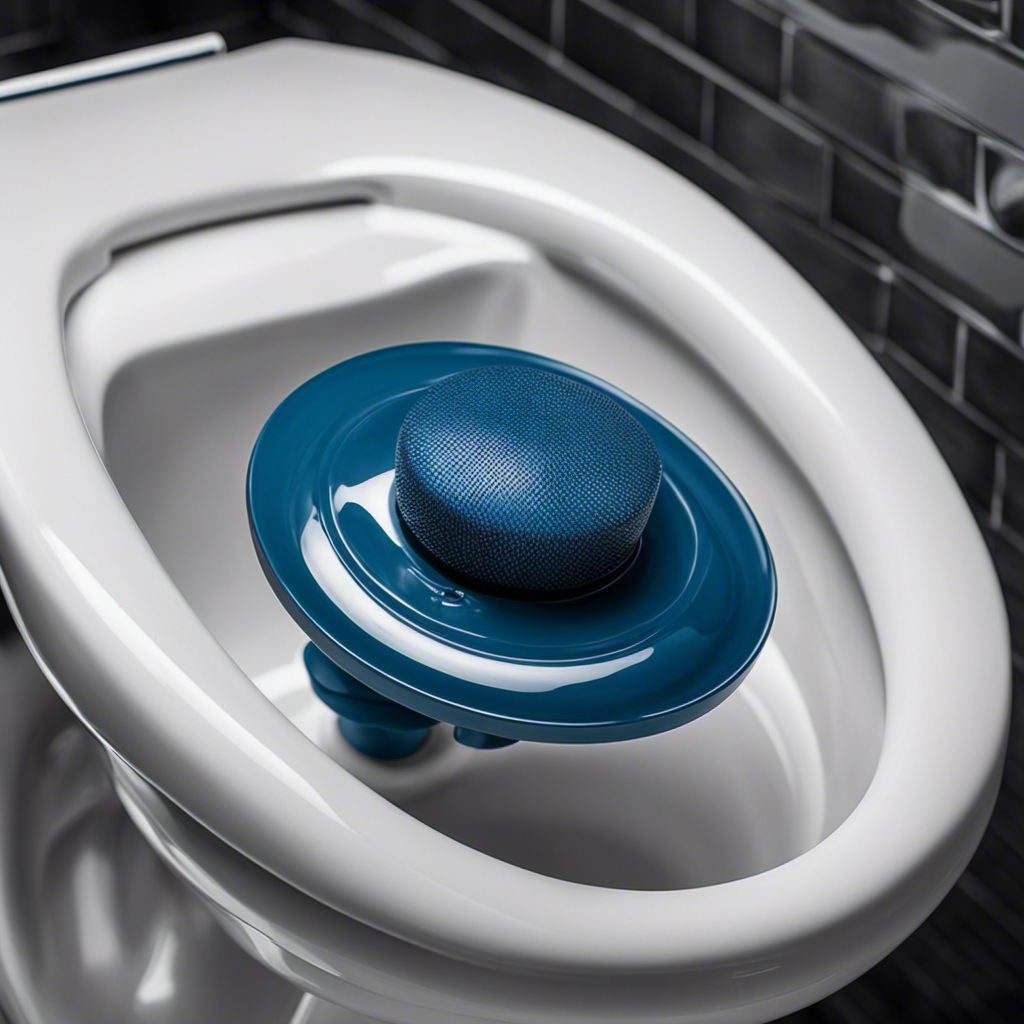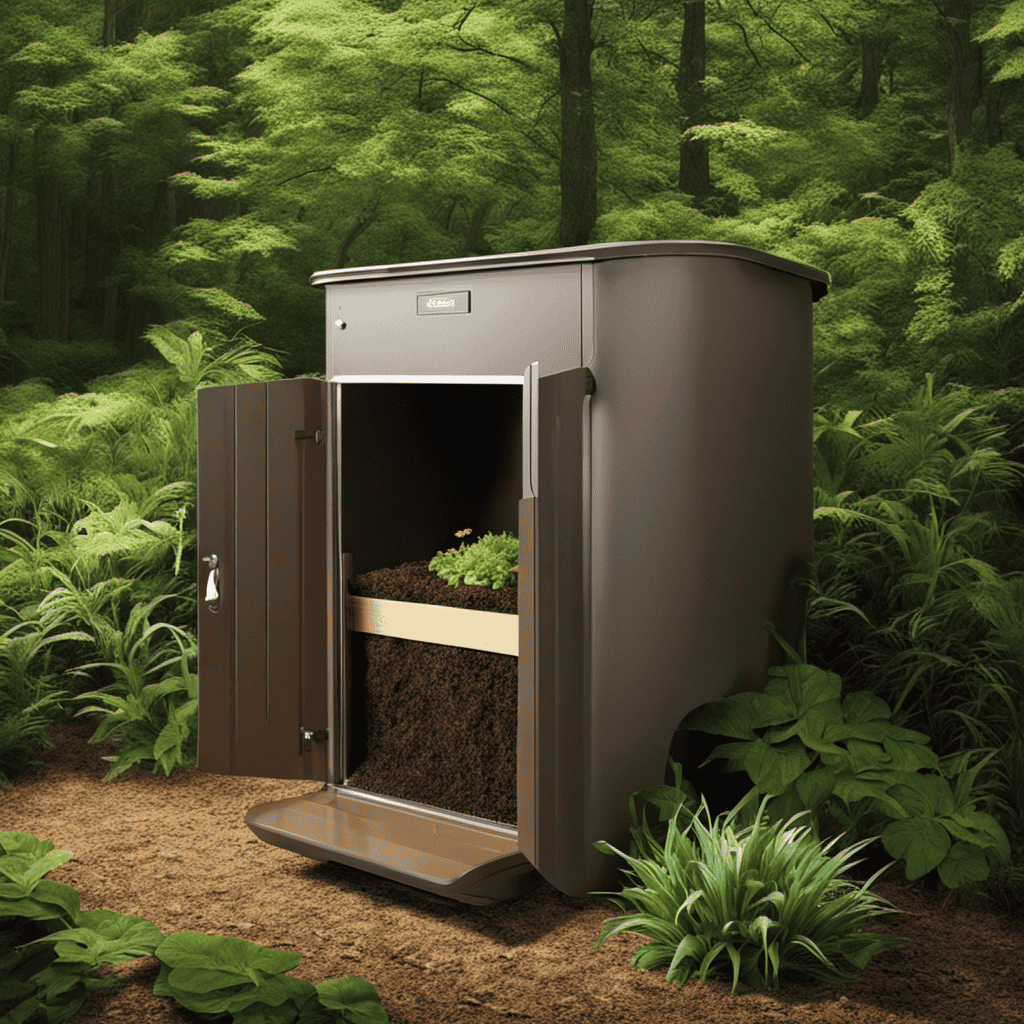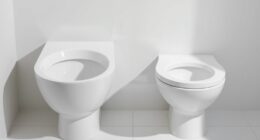I’ve always been fascinated by the idea of sustainable living, and one aspect that piqued my interest is composting toilets.
Did you know that a single person can save up to 6,600 gallons of water per year by using a composting toilet instead of a conventional one?
In this article, I’ll take you on a journey to understand the ins and outs of using a composting toilet.
From selecting the right one to maximizing its efficiency, we’ll explore the scientific and evidence-based methods to ensure a hygienic and eco-friendly experience.
Key Takeaways
- Consider factors such as size, capacity, and ventilation when choosing a composting toilet.
- Proper installation involves selecting a suitable location and following the manufacturer’s instructions.
- Regular maintenance, including emptying the composting chamber and keeping the ventilation system clean, is essential for optimal performance.
- Maximize efficiency by following composting toilet regulations, balancing the carbon-to-nitrogen ratio, and ensuring proper ventilation.
Selecting the Right Composting Toilet
To find the best composting toilet for your needs, you’ll want to consider factors such as size, capacity, and ventilation. Comparing different composting toilet models is essential to ensure you make an informed decision.
Size matters because you need to ensure that the toilet fits comfortably in your space. Additionally, the capacity of the toilet determines how often you’ll need to empty it. Consider the number of people using it and how frequently it will be used.
Ventilation is crucial in preventing odors and promoting the composting process. Look for a model with effective ventilation, such as a fan or vent pipe.
These factors are important when choosing a composting toilet as they impact functionality and your overall experience.
Setting Up and Installing Your Composting Toilet
Installing your composting toilet is a straightforward process that can be completed in a few simple steps.
The benefits of using a composting toilet are numerous, including reducing water consumption, minimizing pollution, and producing nutrient-rich compost.
To begin the installation process, ensure that you have a suitable location with proper ventilation and adequate space.
Next, assemble the toilet according to the manufacturer’s instructions, making sure all components are securely connected.
Position the toilet in the chosen location and connect the ventilation system to allow for proper airflow.
Finally, add the necessary substrate to the toilet and start using it.
Remember to regularly maintain and monitor the composting process to ensure optimal performance and maximize the benefits of your composting toilet.
Proper Maintenance and Troubleshooting Tips
Regular maintenance is essential for optimal performance and troubleshooting any issues that may arise with your composting toilet. To ensure a pleasant experience and minimize odors, follow these maintenance tips:
- Regularly empty the composting chamber to prevent odors from building up.
- Keep the ventilation system clean and functioning properly to maintain good airflow and reduce odors.
- Monitor the moisture levels in the composting chamber to prevent it from becoming too wet or too dry, as this can lead to odor problems.
- Check for any leaks or cracks in the toilet unit, as these can cause odors to escape.
By following these maintenance practices, you can keep your composting toilet working efficiently and effectively, while also minimizing any potential odor issues.
Troubleshooting common problems promptly will help ensure a smooth experience with your composting toilet.
Maximizing the Efficiency of Your Composting Toilet
To get the most out of your composting toilet and ensure optimal efficiency, it is important to follow these tips.
Composting toilets offer numerous benefits, such as reducing water consumption and producing nutrient-rich compost. However, it is crucial to adhere to composting toilet regulations to maintain safe and sanitary conditions.
First, make sure to balance the carbon-to-nitrogen ratio in your composting toilet by adding a mix of organic materials. This will help facilitate the decomposition process and prevent odors.
Additionally, regularly empty the composting chamber, as excessive buildup can hinder decomposition and lead to unpleasant smells.
Lastly, ensure proper ventilation to promote aerobic decomposition and minimize the risk of anaerobic bacteria growth.
Disposing of Compost and Ensuring Hygiene
When disposing of compost from your composting toilet, it’s important to maintain proper hygiene. Here are four key steps to ensure cleanliness and reduce odor:
-
Wear protective gloves: To prevent direct contact with the compost, always wear gloves when handling it. This will reduce the risk of contamination and potential pathogens.
-
Use a sealed container: When removing compost from the toilet, place it in a sealed container to contain any odor and prevent the spread of bacteria or fungi. Airtight containers like buckets or bins with lids are ideal for this purpose.
-
Follow proper composting techniques: Ensure that the compost is properly decomposed before disposal. This can be achieved by maintaining the correct moisture levels, turning the pile regularly, and providing adequate aeration.
-
Clean and sanitize: After disposing of the compost, thoroughly clean and sanitize any tools or containers used in the process. This will help prevent the spread of bacteria and maintain a hygienic environment.
Frequently Asked Questions
How Often Should I Empty the Composting Chamber of My Composting Toilet?
Emptying the composting chamber of a composting toilet depends on the frequency of use, the composting process, and the size of the chamber. Regular monitoring of the composting process will guide you on when to empty it.
Can I Use My Composting Toilet in a Cold Climate?
In a cold climate, composting toilet installation and maintenance can be challenging. However, with proper insulation and regular monitoring, it is possible to use a composting toilet effectively, even in freezing temperatures.
Are There Any Specific Types of Toilet Paper That Should Be Used With a Composting Toilet?
Toilet paper options for composting toilets should consider their environmental impact. Some types, like recycled or biodegradable ones, are better choices as they break down easily in the composting process, reducing the overall ecological footprint.
Can I Use My Composting Toilet for Both Solid and Liquid Waste?
Yes, you can use a composting toilet for both solid waste disposal and liquid waste management. It is designed to separate and process these waste types efficiently, promoting decomposition and odor control.
What Are the Potential Health Risks Associated With Using a Composting Toilet?
Potential health risks associated with using a composting toilet can arise from improper maintenance. Properly managing waste, maintaining proper ventilation, and ensuring regular emptying and cleaning can minimize the risk of odor, pathogens, and contaminants.
Conclusion
In conclusion, composting toilets offer a sustainable and efficient solution for waste management. By selecting the right toilet, setting it up correctly, and properly maintaining it, you can maximize its efficiency and ensure hygiene.
With regular troubleshooting and maintenance, you can address any issues that may arise. But the real question is, why not make the switch to a composting toilet and contribute to a greener and cleaner future?
The evidence supports its effectiveness, so why not take the leap?










